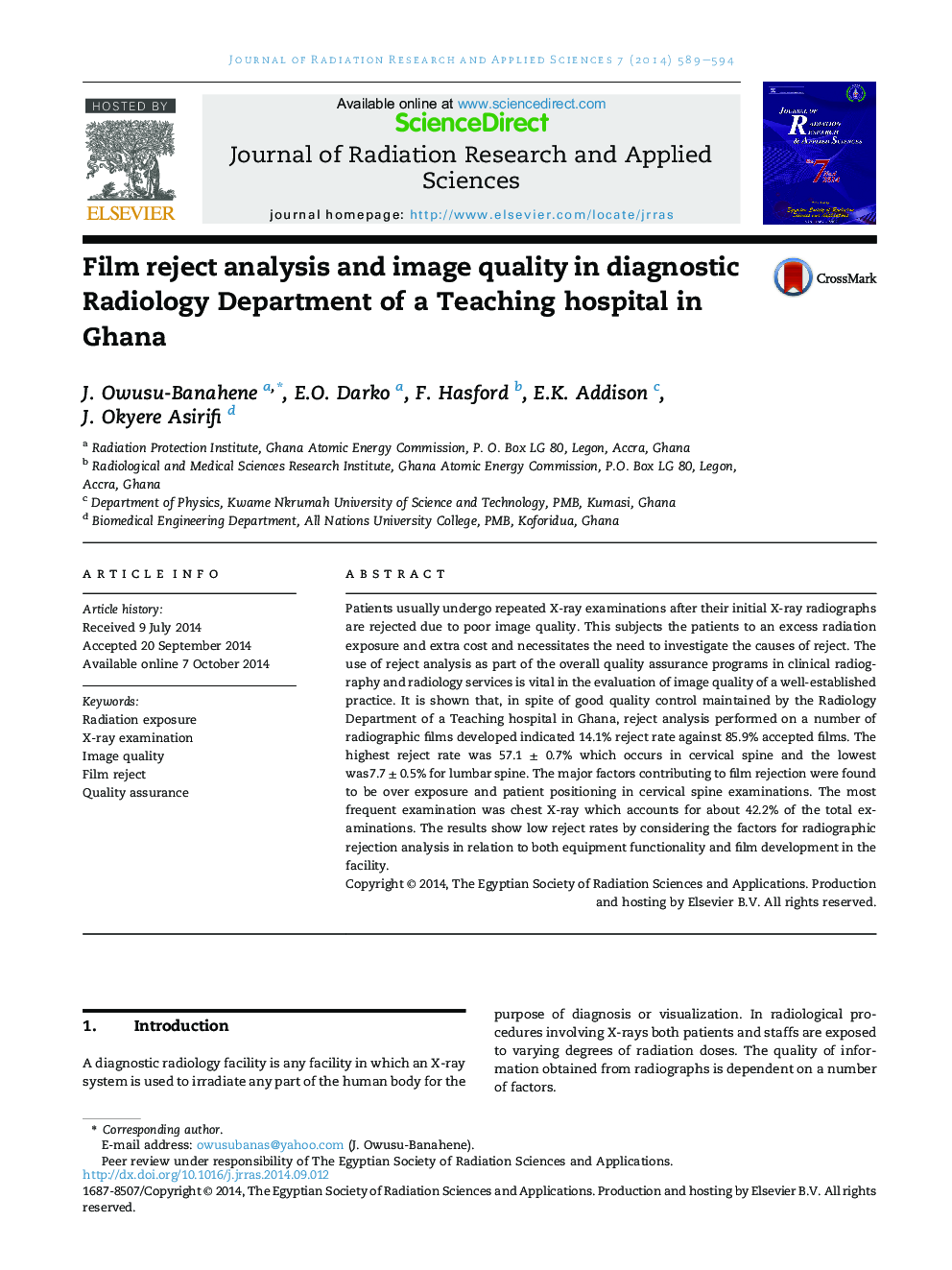| Article ID | Journal | Published Year | Pages | File Type |
|---|---|---|---|---|
| 1570440 | Journal of Radiation Research and Applied Sciences | 2014 | 6 Pages |
Patients usually undergo repeated X-ray examinations after their initial X-ray radiographs are rejected due to poor image quality. This subjects the patients to an excess radiation exposure and extra cost and necessitates the need to investigate the causes of reject. The use of reject analysis as part of the overall quality assurance programs in clinical radiography and radiology services is vital in the evaluation of image quality of a well-established practice. It is shown that, in spite of good quality control maintained by the Radiology Department of a Teaching hospital in Ghana, reject analysis performed on a number of radiographic films developed indicated 14.1% reject rate against 85.9% accepted films. The highest reject rate was 57.1 ± 0.7% which occurs in cervical spine and the lowest was7.7 ± 0.5% for lumbar spine. The major factors contributing to film rejection were found to be over exposure and patient positioning in cervical spine examinations. The most frequent examination was chest X-ray which accounts for about 42.2% of the total examinations. The results show low reject rates by considering the factors for radiographic rejection analysis in relation to both equipment functionality and film development in the facility.
